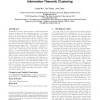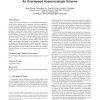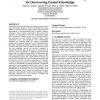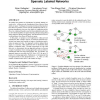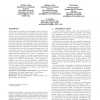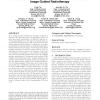116
Voted
KDD
2008
ACM
16 years 29 days ago
2008
ACM
Information-theoretic clustering aims to exploit information theoretic measures as the clustering criteria. A common practice on this topic is so-called INFO-K-means, which perfor...
100
Voted
KDD
2008
ACM
16 years 29 days ago
2008
ACM
We present a detailed study of network evolution by analyzing four large online social networks with full temporal information about node and edge arrivals. For the first time at ...
121
Voted
KDD
2008
ACM
16 years 29 days ago
2008
ACM
Transactional data are ubiquitous. Several methods, including frequent itemsets mining and co-clustering, have been proposed to analyze transactional databases. In this work, we p...
113
Voted
KDD
2008
ACM
16 years 29 days ago
2008
ACM
Researchers in the social and behavioral sciences routinely rely on quasi-experimental designs to discover knowledge from large databases. Quasi-experimental designs (QEDs) exploi...
101
Voted
KDD
2008
ACM
16 years 29 days ago
2008
ACM
In this paper, we address the problem of learning when some cases are fully labeled while other cases are only partially labeled, in the form of partial labels. Partial labels are...
121
click to vote
KDD
2008
ACM
16 years 29 days ago
2008
ACM
We present an approach to reconstructing chemical reaction networks from time series measurements of the concentrations of the molecules involved. Our solution strategy combines t...
117
click to vote
KDD
2008
ACM
16 years 29 days ago
2008
ACM
We address the problem of classification in partially labeled networks (a.k.a. within-network classification) where observed class labels are sparse. Techniques for statistical re...
116
Voted
KDD
2008
ACM
16 years 29 days ago
2008
ACM
In this article we describe a visual-analytic tool for the interrogation of evolving interaction network data such as those found in social, bibliometric, WWW and biological appli...
103
Voted
KDD
2008
ACM
16 years 29 days ago
2008
ACM
In an idealized gated radiotherapy treatment, radiation is delivered only when the tumor is at the right position. For gated lung cancer radiotherapy, it is difficult to generate ...
95
Voted
KDD
2008
ACM
16 years 29 days ago
2008
ACM
In this paper, we propose a set of novel regression-based approaches to effectively and efficiently summarize frequent itemset patterns. Specifically, we show that the problem of ...
